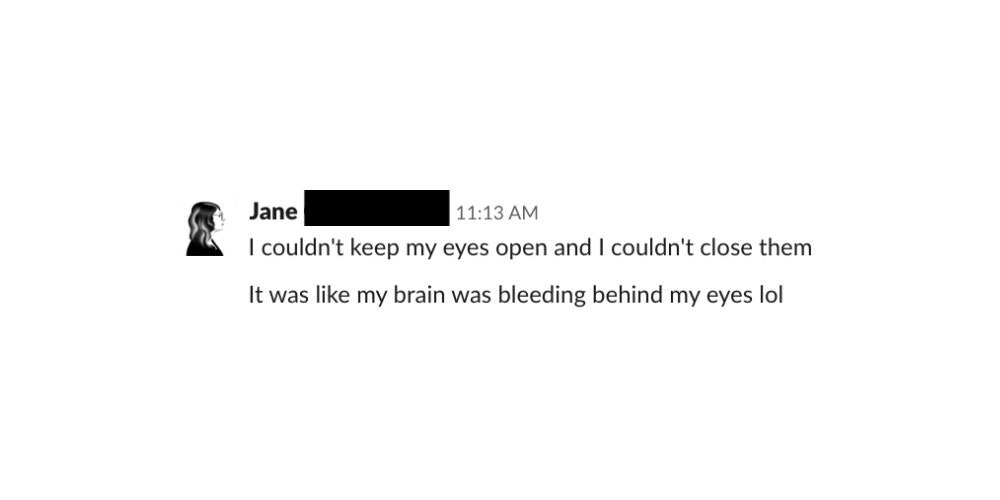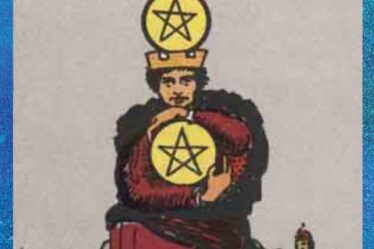
Dealing with the most common migraine symptoms (throbbing head pain, intense nausea) is torture all on its own, but when a migraine attack affects your eyes, you have a whole new level of agony to contend with. If you’ve experienced an “eye migraine,” you know the agony all too well. If haven’t, this co-worker-slash-migraine-patient’s description will give you an idea:
Migraine with aura (formerly referred to as an ocular migraine) is a type of migraine that can cause visual symptoms—including vision loss, blind spots, and even flashing lights—plus, eye pain. Another type, retinal migraine, is more rare and focused on one eye.
Though the name “migraine with aura” implies this type of migraine comes with “light show” symptoms (think: a Phish show—but in Dante’s Inferno) it’s entirely possible to experience an eye migraine that’s all eye pain, with no visual interruptions.
“People can absolutely get eye pain with migraines even if they do not have visual symptoms with their attacks,” says Dr. Anna Pace, assistant professor of neurology and headache medicine specialist at the Icahn School of Medicine at Mount Sinai.
What is a migraine with aura?
“Migraine with visual aura,” Pace says, “is essentially when a person has vision changes prior to other migraine symptoms.” The changes, which can last for minutes or up to an hour-plus, include the vision loss, blind spots, and flashing lights mentioned above—plus, zig-zag patterns or warped vision (seeing things in a mosaic or paisley-type pattern, or as though you’re looking through a kaleidoscope).
Why do you get eye pain with a migraine?
Pace explains a migraine attack as an activation in the brain that triggers nerves to set each other off until everything is firing at once. The visual component comes in when the occipital lobe is activated and can cause those fireworks or glittery-type visual changes; as that activation passes, those side effects can give way to vision loss or blurred vision. Usually, these visual problems occur in both eyes, but they may be on one side of your visual field. “The nerve that is the major player in migraine is the trigeminal nerve, which controls sensation to the face and in the sinuses,” she says. “When one of the branches is activated, especially the top one, you can feel pain in the forehead, around the eye, and behind the eye.”
How to treat eye pain
If your eye pain is the result of a migraine attack, there are many treatment options to help reduce both the pain and the visual disturbances. There’s a vast array of prescription migraine medications—CGRP inhibitors (also known as CGRP antagonists, including monoclonal antibodies and the newer gepants), triptans, and ditans, for starters—plus, over-the-counter options, like acetaminophen and non-steroidal anti-inflammatory drugs (NSAIDs, such as aspirin or ibuprofen), which are often combined with caffeine.
Pace says some patients find relief by applying an ice pack on the area of pain; putting pressure above the eyebrows can also help mitigate head pain. If you’re amid common migraine triggers (such as bright lights or high altitudes) do your best to relocate.
How to prevent eye pain in the future
There is no cure for migraine with aura or retinal migraine—or any type of migraine, for that matter. Therefore, treatment is aimed at preventing migraine attacks, reducing their frequency, and stopping individual attacks when they occur.



